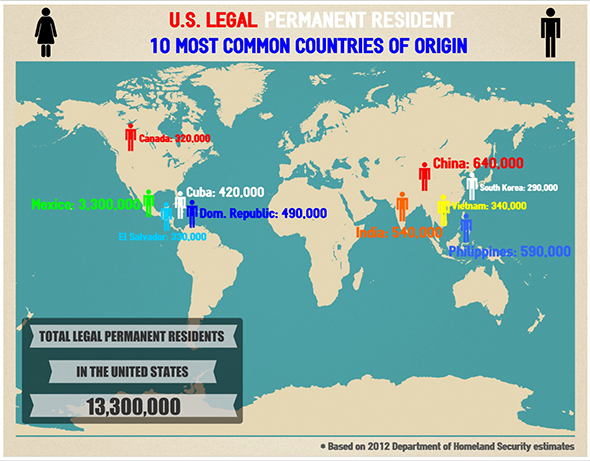WASHINGTON — New Department of Homeland Security estimates show that the legal permanent resident population in the United States stands at more than 13 million and grew at a 2 percent clip between 2011 and 2012.
DHS’s Office of Immigration Statistics released the most recent estimates of the legal permanent resident population in the United States late last month. The report provided estimates from Jan. 1, 2012 based on the analysis of U.S. Citizenship and Immigration Services and DHS records.
USCIS defines legal permanent residents as any non-citizen “residing under legally recognized and lawfully recorded permanent residence.” This status gives the legal permanent resident full authority to live and gain employment within the United States.
Legal permanent residents are also known as permanent resident aliens, resident alien permit holders, and perhaps most commonly, Green Card holders.
Immigrants often get Green Cards through family members, employer sponsorship or status as a refugee or asylee.
Between 2008 and 2012 more than 5.3 million immigrants gained legal permanent resident status in the United States, marking a 5 percent increase from the previous five-year period — 2003 through-2007.
As of January 2012 the total legal permanent resident population in the United States was estimated by DHS at 13.3 million, a 2 percent increase from the prior year.
In 2011 and 2012, California housed the highest number of legal permanent residents at roughly 3.4 million (26 percent of all U.S. LPRs), followed by New York, Texas and Florida.
During the same time period, estimates showed that the largest number of U.S. green card holders emigrated from Mexico. Approximately 3.3 million Mexican citizens were U.S. legal permanent residents in 2012, distantly followed by China at 660,000, the Philippines and India.
In comparison, January 2011 estimates tabbed the U.S. illegal immigrant population at roughly 11.5 million, a 7 percent year-over-year increase from the previous year.


